 |
 |
 |
| |
US Clinicians Largely Follow Guidelines in Picking First-Line Regimens
|
| |
| |
IDSA/IDWeek 2015, October 7-11, San Diego
Mark Mascolini
From 2010 through 2014, US clinicians usually prescribed antiretroviral combinations preferred or recommended as first-line therapy in Department of Health and Human Services (DHHS) guidelines [1]. Use of DHHS alternative regimens rose then fell over the study period, while prescription of nonpreferred/nonrecommended combinations dwindled steadily but still accounted for 16% of first-line prescriptions in 2014.
Experts empaneled by the DHHS regularly update first-line antiretroviral recommendations for adults and adolescents based on emerging data [2]. To get an understanding of how closely US clinicians follow this advice, researchers from Janssen and investigators working with the Optum Research Database and the Impact National Benchmark Database of insured patients conducted this study.
The analysis involved HIV-1-positive adults with a first pharmacy claim for antiretrovirals from January 2010 through December 2014. The analysis excluded people with HIV-2 infection and those with evidence of antiretroviral use before 2010. The researchers divided first-line prescriptions into three groups according to DHHS guidelines: preferred/recommended (P/R), alternative, and nonpreferred/nonrecommended.
The analysis involved 9030 antiretroviral-naive people, 75% from the Optum database and 25% from the Impact database. Almost everyone (94%) was commercially insured, while the rest had Medicare Advantage plans; 85% were men, age averaged 41.7, and 38% were 45 to 64. The largest proportion (48%) lived in the South, 27% in the Northeast, 13% in the Midwest, and 11% in the West. One in 5 people (20.8%) had 1 or more baseline comorbidities, including 9% with chronic pulmonary disease, 6.6% with mild liver disease, 3.7% with any malignancy, and 2.8% with kidney disease.
Use of P/R regimens dipped then rose from 2010 through 2014, while use of alternative regimens rose and fell in a near mirror image of P/R trends:
2010: P/R 72.5%; alternative 6.9%
2011: P/R 68.2%; alternative 12.1%
2012: P/R 58.1%; alternative 24.0%
2013: P/R 47.1%; alternative 35.2%
2014: P/R 81.7%; alternative 2.3%
Nonpreferred/recommended regimen frequency drifted downward from 20.6% in 2010 to 15.9% in 2014.
Atripla (coformulated efavirenz/tenofovir/emtricitabine) proved by far the most-prescribed regimen during the study period, accounting for 38.7% of prescriptions. The next 5 most-favored regimens all included tenofovir/emtricitabine, 8.7% with elvitegravir/cobicistat, 8.1% with rilpivirine, 6.8% with darunavir/ritonavir, 6.6% with raltegravir, and 5.6% with atazanavir/ritonavir. Treatment duration with any one regimen averaged 367.5 days, while median duration stood at 213 days.
The researchers cautioned that their findings may not apply to people without commercial insurance.
References
1. Forlenza J, Brown K, Shprecher A, et al. Use of guideline-recommended antiretroviral regimens in a large US HIV treatment-naive population: findings from a 5-year analysis of payer claims data. IDWeek 2015, October 7-11, San Diego. Abstract 415.
2. Department of Health and Human Services. Guidelines for the use of antiretroviral agents in HIV-1-infected adults and adolescents. https://aidsinfo.nih.gov/guidelines
-----------------------
Reported by Jules Levin
What's New in the Guidelines? (Last updated: September 14, 2015; last reviewed: April 8, 2015), Revisions to the May 1, 2014.......https://aidsinfo.nih.gov/guidelines/html/1/adult-and-adolescent-arv-guidelines/11/what-to-start
Use of Guideline-Recommended Antiretroviral (ARV) Regimens in a Large US HIV Treatment-Naïve (TN) Population:
Findings From a 5-year Analysis of Payer Claims Data
Jamie B. Forlenza, PharmD, MS1,*; Kimberley Brown, PharmD, AAHIVE1; Adam Shprecher, PharmD, BCPS, AAHIVE1; Feng Cao, PhD2; Amy J. Anderson, MS2; Jianbin Mao, PhD2
1Janssen Scientific Affairs, LLC, Titusville, NJ; 2Health Economics and Outcomes Research (HEOR), Optum, Eden Prairie, MN.
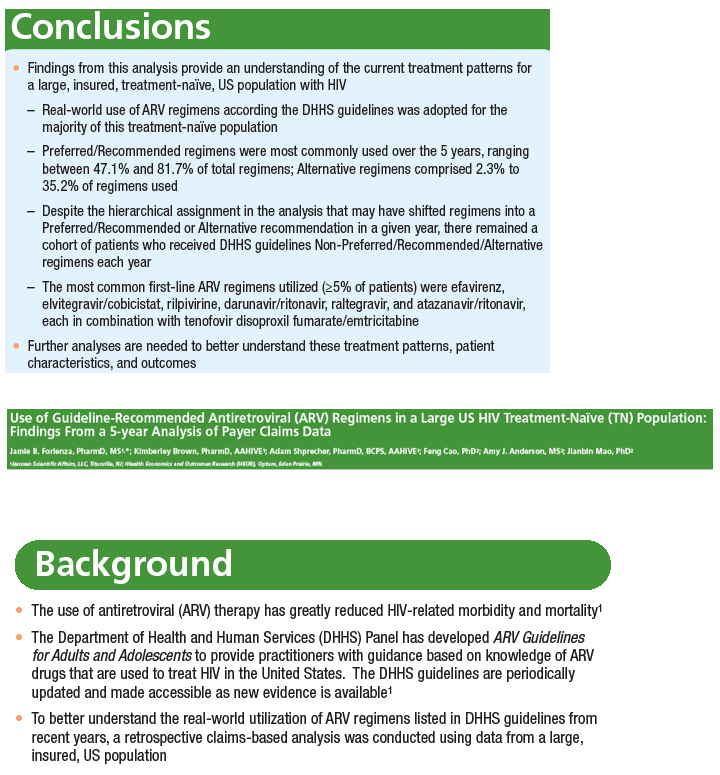
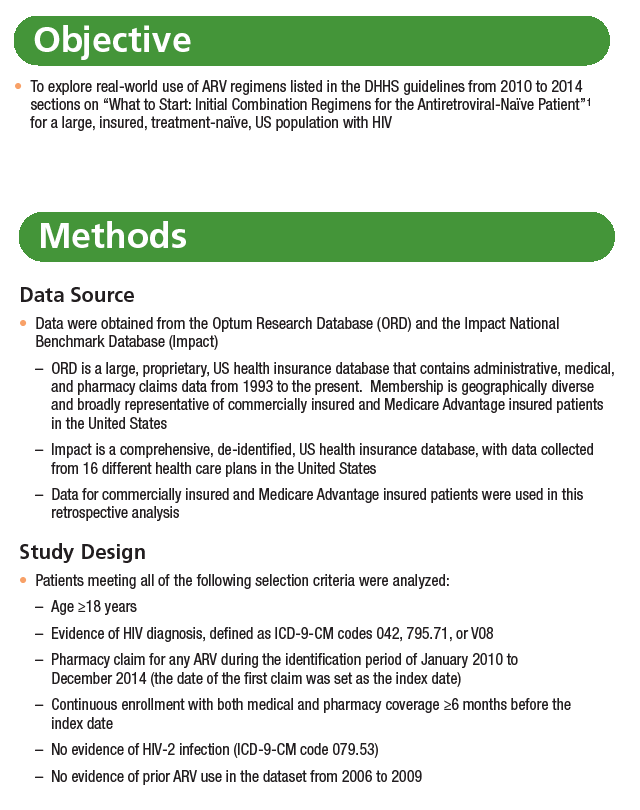
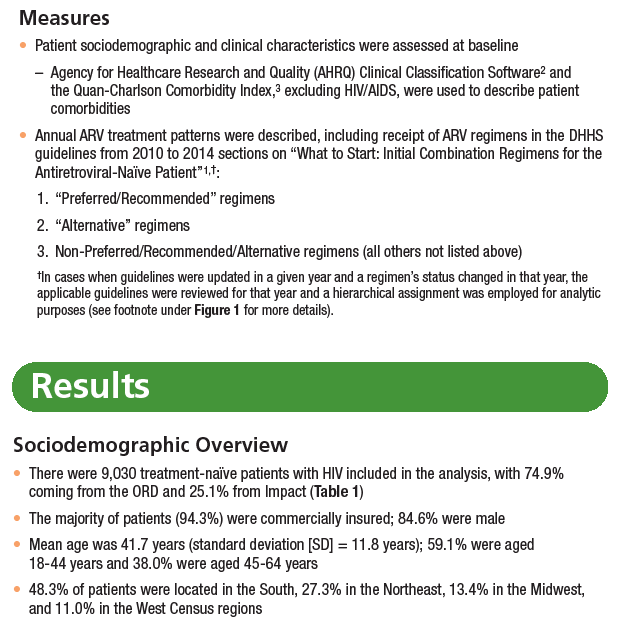
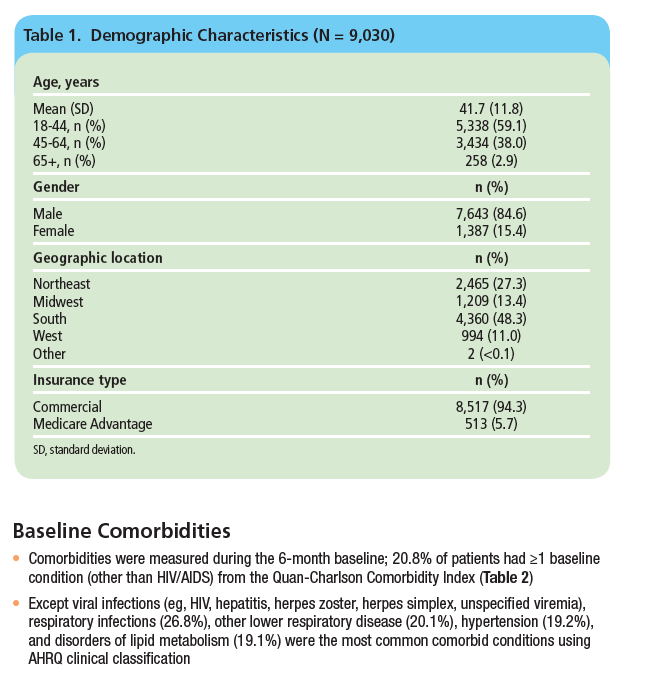
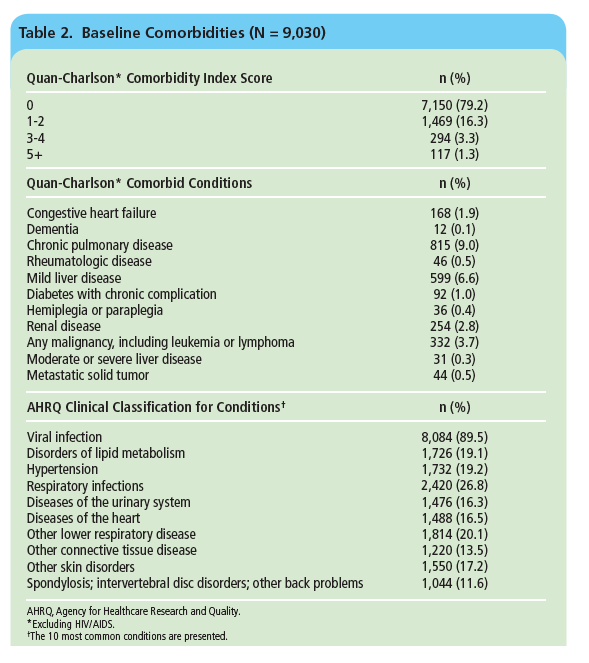
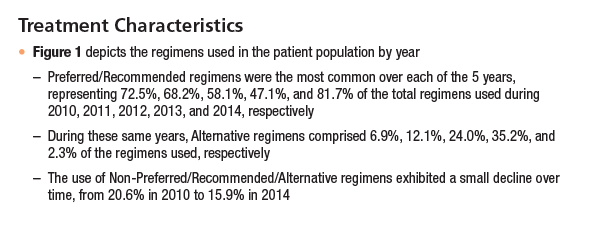
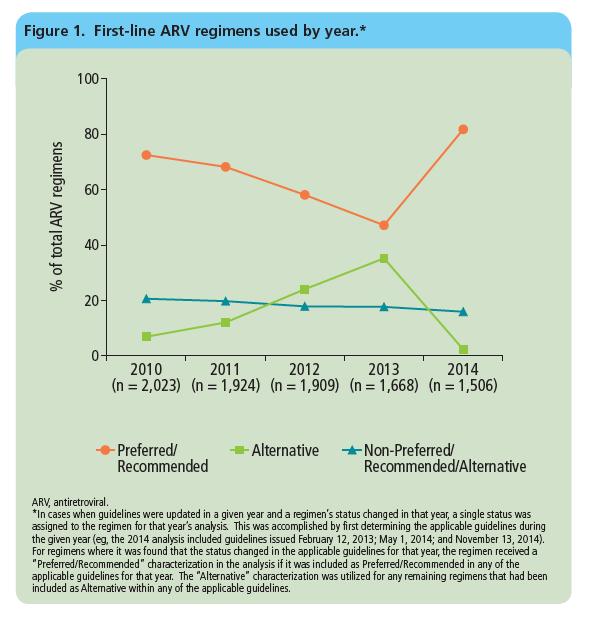
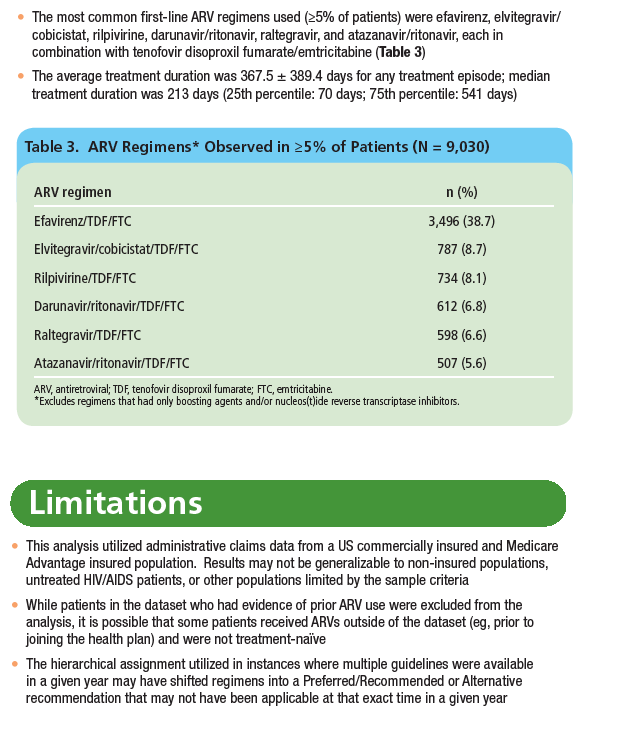

|
| |
|
 |
 |
|
|